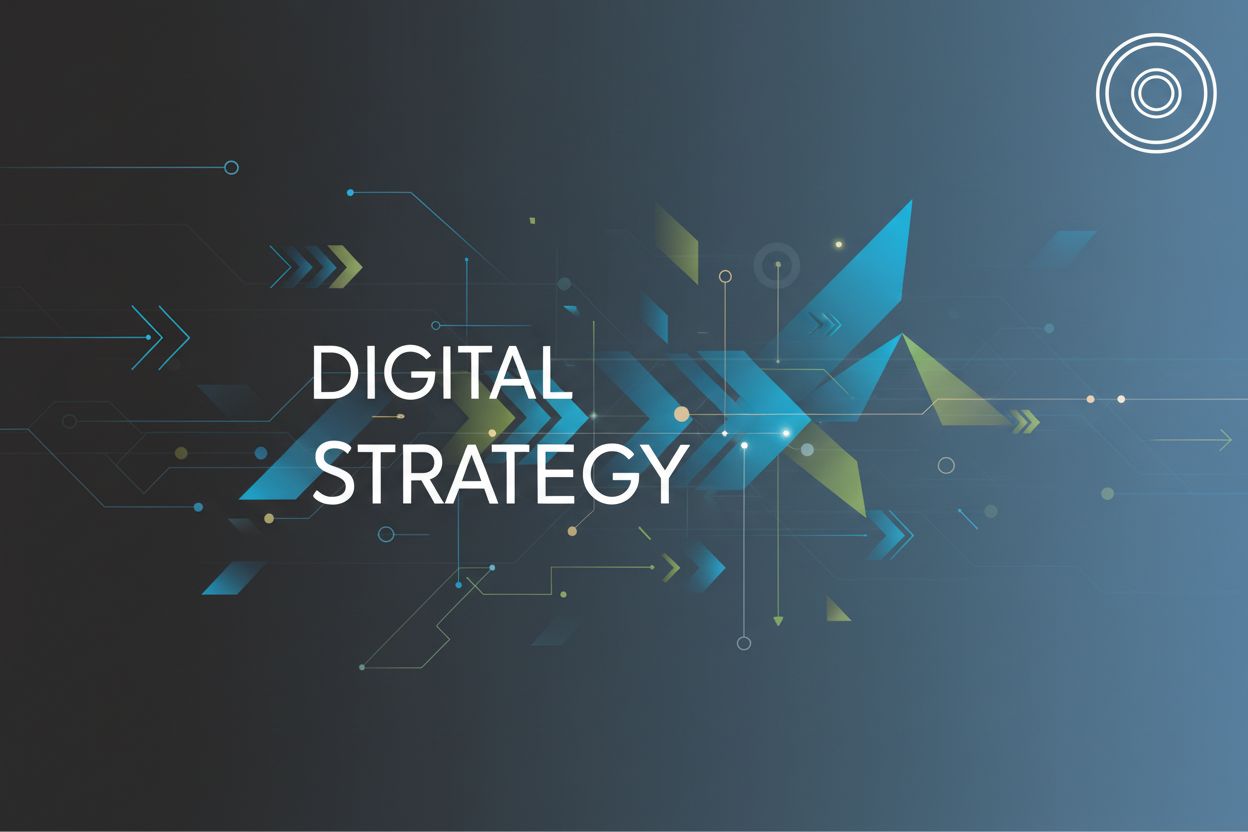The Evolution of Interactive Digital Ads: Transforming Marketing Strategies
TL;DR
The Dawn of Digital Advertising: A Static Start
Did you know the first banner ad ever—for AT&T—appeared way back in 1994? Seems like ages ago, right? But that's where it all started, and boy, have things changed since then.
- Initially, these banner ads were like digital billboards, just kinda sitting there. You'd see them; maybe, you'd click. But mostly, you didn't.
- Click-through rates (CTR) were super low and ad blindness was already a thing. People just tuned 'em out. Honestly, who can blame them? They weren't exactly exciting or relevant.
- Engagement? Forget about it. These ads were a one-way street. No interaction, no personalization—nothing to really grab your attention or, you know, make you wanna actually do something.
Then, things got… interesting. Someone had the bright idea to introduce pop-up ads and interstitials. Imagine, you're trying to read an article, and BAM! – a full-screen ad jumps out at you. Annoying, right?
- People hated them. User frustration went through the roof.
- And the negative brand perception? Ouch. It certainly didn't do good for anyone's image, that's for sure.
- It became super obvious that the industry needed more user-friendly ad formats. Something less intrusive, more engaging, and you know, something that didn't make people wanna throw their laptops out the window.
So, what was the solution? Well, that's exactly what we're gonna dive into next.
The Interactive Revolution: Engaging Users in New Ways
Remember those old banner ads? Yeah, they were about as exciting as watching paint dry. But then, things started to get interesting. We started figuring out how to make ads that, you know, actually do something.
So, what exactly makes an ad "interactive"? It's all about getting the user involved, I mean, right? Forget just seeing something; it's about clicking, dragging, typing, and generally messing around with the ad itself. Think of it as turning ads into little games or experiences.
- Early examples included expandable banners. Remember clicking a small banner and it suddenly takes over half the webpage? Kinda annoying back then, but hey, it was new! There was also in-banner video, which was a step up from static images, even if the quality wasn't always, you know, stellar.
- The big shift was moving away from passive viewing. Instead of just hoping someone might click, ads started asking for interaction. Polls, quizzes, little animations that responded to your mouse movements... suddenly, ads weren't just ads anymore.
Then came rich media ads, and things got way more interesting. These were like the souped-up versions of those early interactive formats. Flash ads, anyone? Okay, maybe not Flash ads, considering all the security issues and how clunky they could be. But Flash ads were a really important precursor to richer interactive formats. They were the first real attempt at making ads more dynamic and engaging beyond simple static images, even with their limitations. They paved the way for the more sophisticated rich media we see today.
- They had way better visuals, more engaging animations, and more complex interactions. It's hard to remember a time before this, but it's true! Before rich media, ads were mostly static images or simple animations. Imagine trying to convey a complex product feature with just a JPG – it was a real limitation. Rich media changed that by allowing for video, audio, and interactive elements, making ads more like mini-experiences.
- The goal was simple: make ads that people actually remembered. And not just because they were annoying, like those pop-ups. The whole point was to make a good impression, to leave users with a positive feeling about the brand.
- It helped improve user engagement and brand recall.
Interactive ads aren't just about being flashy; they're about building real connections with people, you know? Kinda like a good conversation is way better than someone just shouting at you. Companies like GetDigitize are really good at this, creating campaigns that feel more like experiences than just ads.
Next up, we'll look at the impact these ads had on brand engagement, and how companies are using them to create some seriously cool campaigns.
Mobile and Social: Fueling Interactive Ad Growth
Mobile and social media, right? It's like they were made for interactive ads. I mean, think about it – we're all glued to our phones anyway. Why not make those ads a little more fun, right?
- Mobile advertising is booming, and interactive ads are leading the charge. Forget clunky desktop experiences – we're talking ads designed specifically for those smaller screens and touch interfaces.
- Think about those mobile games where you can try out a demo directly from an ad. It's not just a flashy video; it's actual gameplay.
- Location-based advertising gets a major boost. Imagine a restaurant ad popping up when you're nearby, offering a special deal if you complete a quick, interactive poll about your favorite dishes.
Social media platforms are like, the perfect environment for interactive ads; it's all about engagement.
- Polls and quizzes are super common, but what about using augmented reality (ar) filters in ads? A clothing brand could let you virtually "try on" clothes using a Snapchat filter, increasing the chances of a purchase.
- Influencer marketing gets a facelift with interactive content. Instead of just showing off a product, an influencer might host a live q&a session, answering questions through an interactive poll.
- Social listening is key, too. Brands can monitor conversations and respond in real-time with targeted, interactive ads. It lets them get in on the chat, know what i mean?
All this interaction not only grabs attention but also provides valuable data. So, what does this data tell us about the future of advertising strategies? Let's find out.
Advanced Interactive Ad Technologies: AI, VR, and Beyond
Okay, so, ai and vr in ads? It sounds like something straight out of a sci-fi movie, right? But its here, and it's changing things up, big time.
ai-powered personalization is kinda mind-blowing. Instead of seeing the same boring ad as everyone else, ai figures out what you're actually interested in and shows you something relevant. it's like the ad is reading your mind – or at least, your browsing history!
Dynamic creative optimization (dco) takes this even further. Ads aren't just personalized once; they're constantly tweaked and optimized based on how you interact with them. So, if you click on a certain part of an ad, it might change the next time you see it to show you something even more appealing.
And then there's chatbots! Forget filling out forms or waiting on hold. You can now have a conversation with an ad, ask questions, and get personalized recommendations right then and there.
vr and ar ads are like stepping into another world. Imagine trying on clothes virtually or exploring a new car model from the comfort of your couch. It's way more engaging than just looking at a picture or watching a video.
Think about interactive product demos. Instead of just seeing a product in action, you can actually use it in a virtual environment. it’s a game changer, and a whole different experience.
This creates a much stronger emotional connection with the brand.
So, how does all this affect the way we measure success? That's what we'll dive into next.
Measuring the Impact: ROI and Key Metrics
Okay, so, we've talked about all these cool interactive ads—but how do you know if they're actually working? It's not just about looking flashy, right?
- First, you gotta look at engagement rate. Are people actually, you know, doing something with the ad? Dwell time is key, too, because a longer dwell time means that the ad is engaging. For example, a typical engagement rate might be anywhere from 1-5%, but this varies wildly by industry and ad type. A good dwell time could be anything from a few seconds to over a minute, depending on the complexity of the interaction.
- Then, check those conversion rates. Are people clicking through and, like, buying stuff or signing up for things? This one's pretty important, obviously. A good conversion rate is often considered to be 2-5%, but again, this is highly dependent on the product or service being advertised and the quality of the landing page.
- Don't forget about the big picture: brand lift. Is the ad actually making people think differently about your brand? This is often measured through surveys before and after an ad campaign, looking for increases in brand awareness, recall, or positive sentiment.
Honestly, if you aren't seeing positive movement in these areas, then it might be time to rethink your strategy.
The Future of Interactive Advertising: What's Next?
So, we've come a long way from those static banner ads. Interactive advertising has evolved dramatically, and it's only going to keep getting more sophisticated.
- Hyper-personalization: We're moving beyond just basic personalization. Expect ads that adapt in real-time to your mood, your location, and even your physiological responses (think smart wearables).
- Immersive Storytelling: VR and AR will become even more mainstream, allowing for truly immersive brand experiences that blur the lines between advertising and entertainment. Imagine stepping into a brand's world rather than just seeing an ad for it.
- Ethical AI and Data Usage: As AI gets more powerful, there will be a growing emphasis on transparency and ethical data practices. Users will demand to know how their data is being used and want more control over it.
- The Metaverse and Beyond: As new digital frontiers like the metaverse emerge, so too will new forms of interactive advertising. Brands will need to find creative ways to engage users in these virtual spaces.
The key takeaway is that advertising is becoming less about interruption and more about invitation. It's about creating value and experiences that users genuinely want to engage with. The companies that embrace this shift will be the ones that thrive.




